The Bazaar began in 2017 when Andrey “Reynad” Yanyuk came up with the idea to create his own digital trading card game. Known for his competitive success in Magic: The Gathering and Hearthstone, Andrey wanted to build a deckbuilding game that balanced competitive depth with broad accessibility. With a prototype in hand, he launched an Indiegogo campaign to raise initial funding and build a community around the concept.
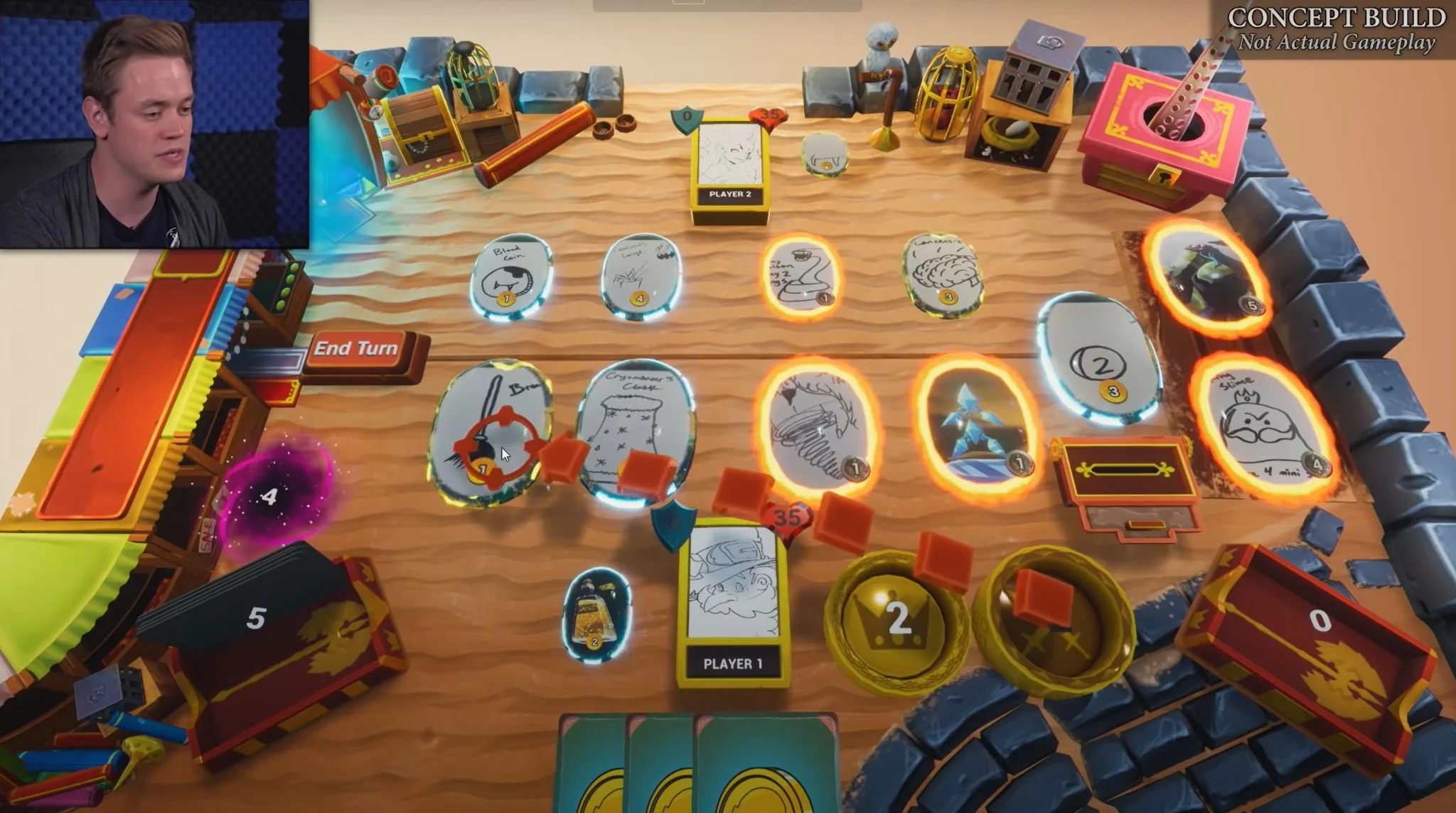
By this time, Andrey had already founded Tempo Storm (now Tempo), a growing esports organization, specializing in meta strategies and competitive insights. As he started looking for the right development partner for The Bazaar, one of his contacts in Silicon Valley suggested exploring Ukrainian studios. Being Ukrainian-born himself, Reynad agreed and set his sights on Lviv, where N-iX Games is headquartered.
Andrey arranged meetings with N-iX as well as two other companies based in Lviv. But from the beginning, there was the right chemistry between us.
Daniel Poludyonny, Head of N-iX Games, remembers the moment well:
“It was a match made in heaven. We spoke the same language as I’d been playing Hearthstone religiously, and of course, I knew Reynad from his streaming and competitive days. Plus, our lead Unity developer, game producer, and backend developer were also Hearthstone fans, so we instantly clicked.”
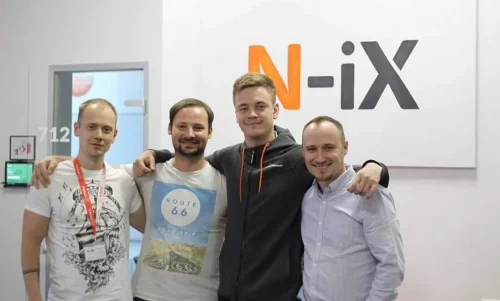
Our first meeting in June 2018 at the N-iX office (Daniel on the right)
We presented a development proposal with an 18-month timeline, and Andrey decided to move forward with us as the development partner. At that time, it was the biggest project N-iX Games had ever bid on.
When N-iX Games joined the project, The Bazaar already had a prototype built on Unreal Engine. But we knew Unity inside and out back then, and we saw how well it aligned with the game’s scope, target platforms, and development speed. So we proposed a switch, to which Andrey agreed.
We kicked off with a small team: a producer, two Unity developers, two artists, a backend developer, and a technical designer to support the design process with technical tasks.
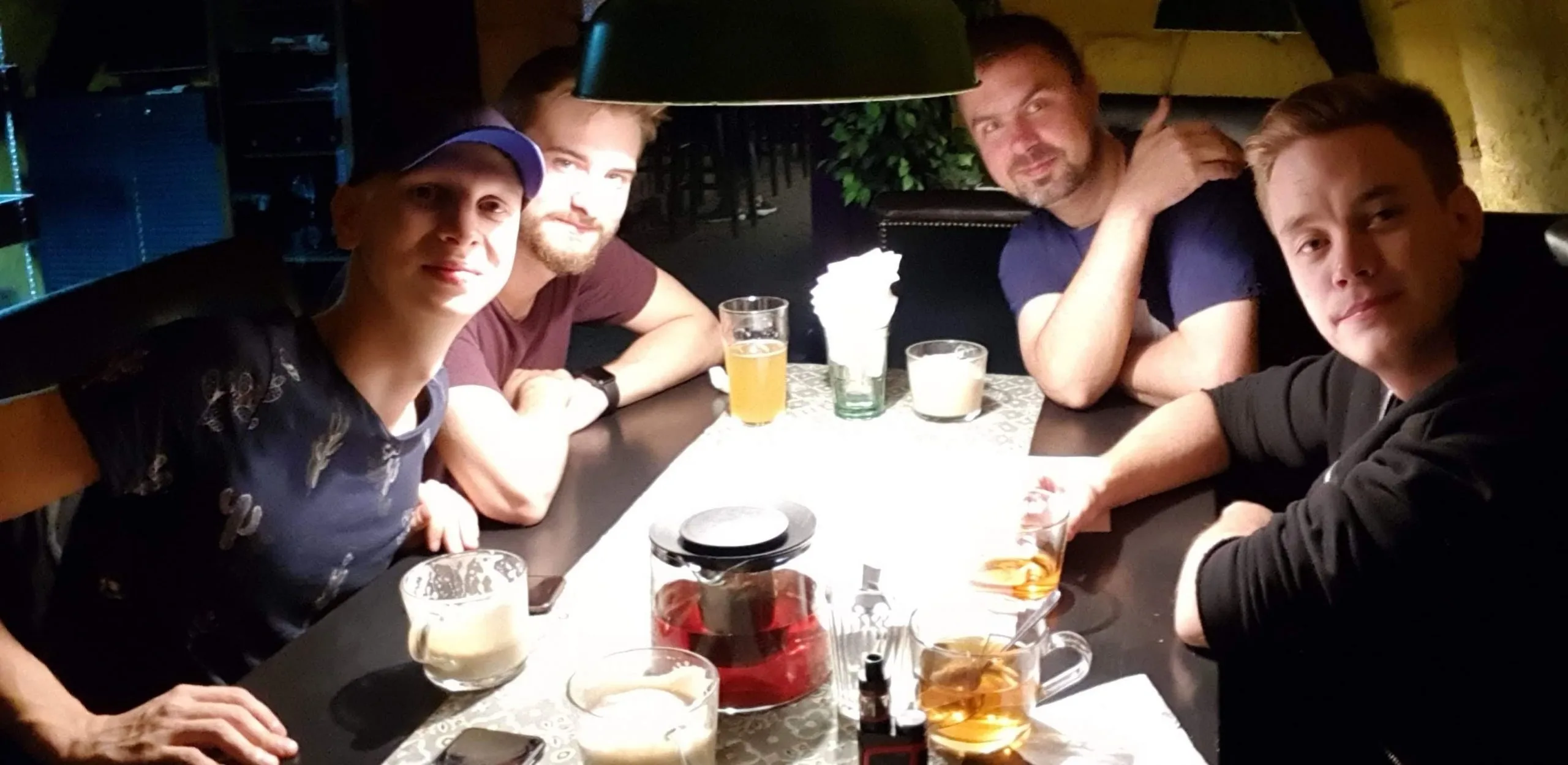
Andrey’s second visit to Lviv, beer-drinking with the team, September 2018
For most of 2018, progress was slow, with a lot of iteration and back-and-forth. One of the earliest mechanics included draw and discard piles, but that concept felt risky to Andrey, and he spent a lot of time experimenting with different alternatives.
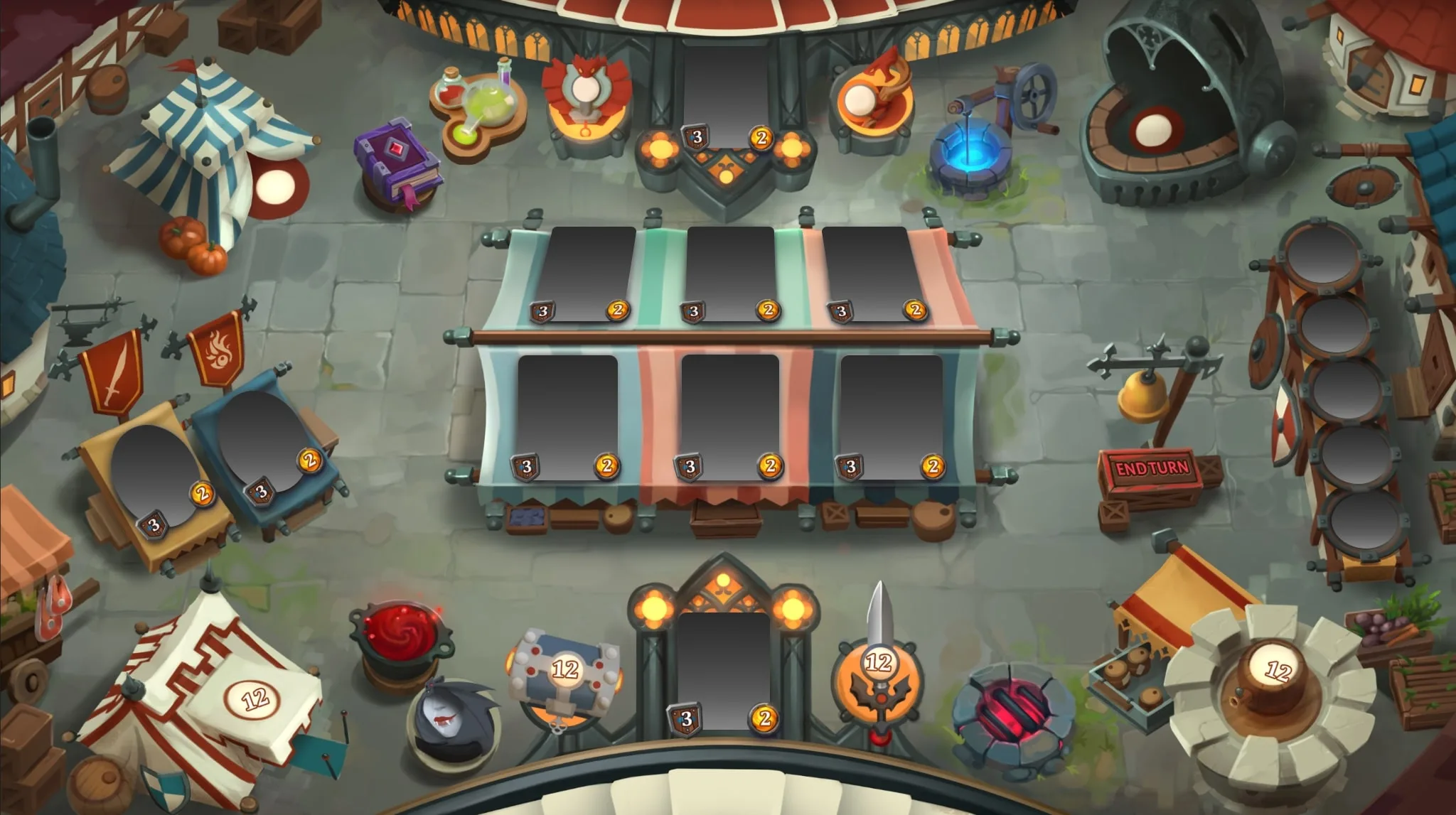
Experimenting with gameboard layouts

Up to this point, Tempo Storm was funding the project from their core business — esports management. However, in March 2019, during GDC, Andrey met Daniel and shared some difficult news: there were financial issues, and Tempo wouldn’t be able to fund the project for at least four months.
Daniel:
“I want to admit that I was under a lot of pressure from our management. After all, this project was close to self-cost with very little profit, and many had doubts at that stage. Nevertheless, I always had deep faith in the project and made the decision that N-iX would fund development during the gap so we didn’t have to halt or risk a complete stop.”
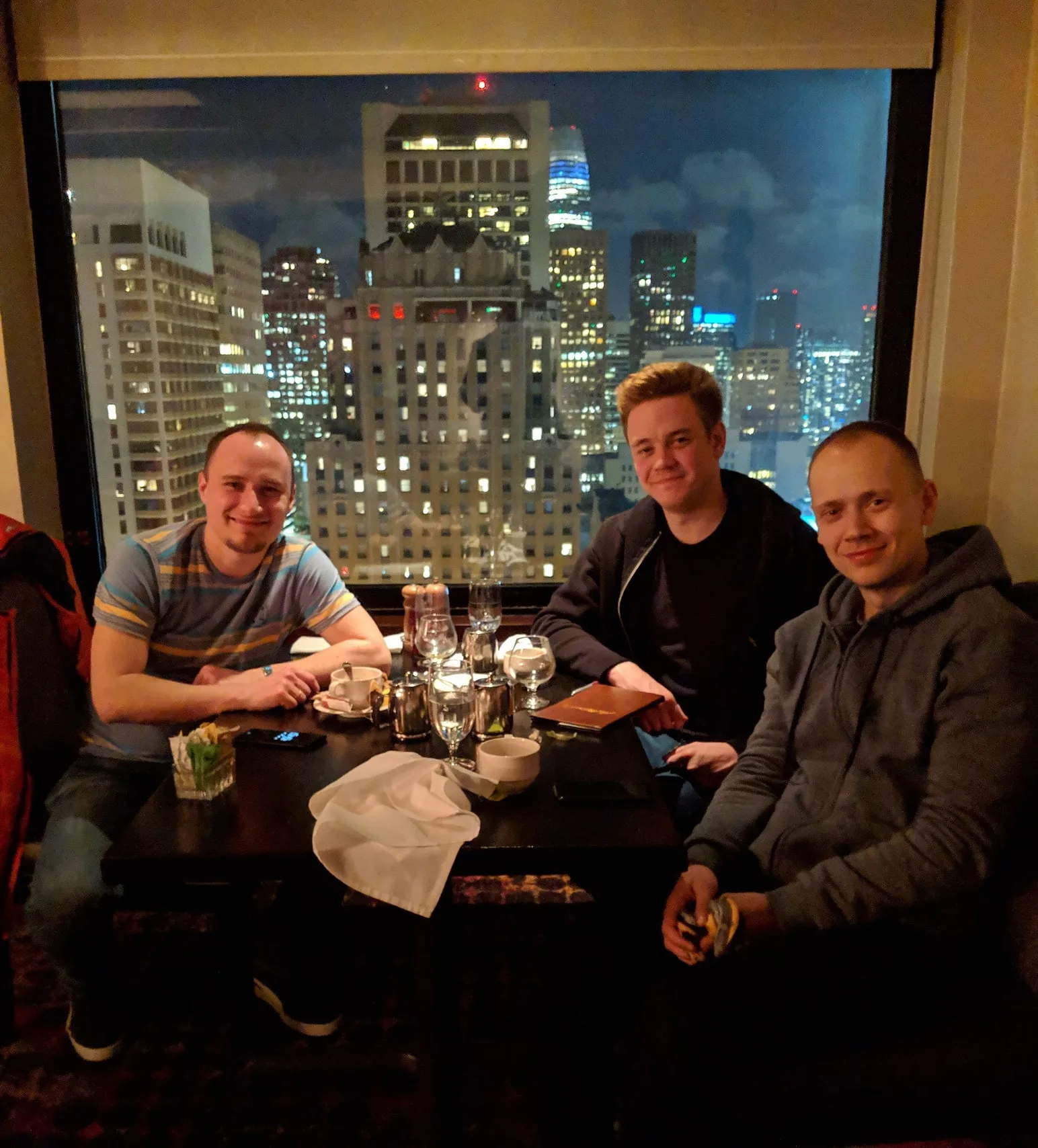
Andrey and Daniel meeting during GDC 2019
After four months, the financial situation was resolved, and we returned to a normal production cycle. At that time, we were still missing two critical roles: Narrative Design and Art Direction. Andrey brought in external consultants to help fill those gaps.
By the end of 2019, we delivered a polished demo that helped Tempo Storm secure a major investment round.
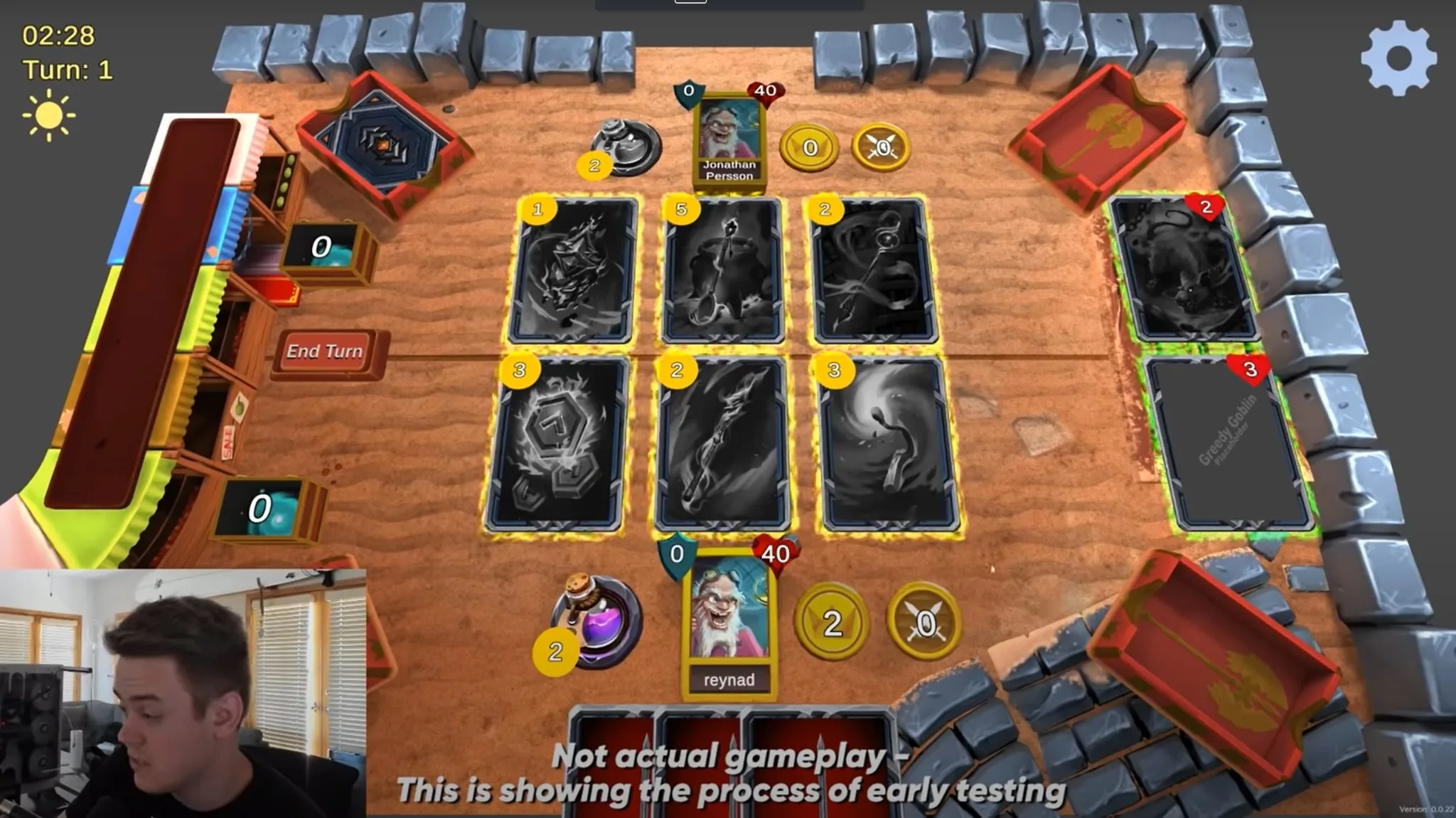
First, the project was listed on Republic, and then further funding was secured.
Reynad:
“The early demos we made together both improved the game and helped our business mature.”
The funding allowed us to scale up the team — from 7 people to around 15. N-iX Games also brought on Valentyn Khruslov, a talented artist who later quickly grew into the role of Art Director.
Daniel:
“Frankly, this was the first time we had to take on such a high level of responsibility, and I was personally working with Valentyn daily to ensure alignment with Tempo’s expectations.”
Throughout the year, we continued refining the game. Toward the end of summer, The Bazaar underwent a major gameplay pivot.
Andrey and Ben Shumaker (Lead Game Designer on Tempo’s side) arrived in Lviv with a fresh concept. It was probably the fifth or sixth time Tempo had revamped the core gameplay, but this version felt completely different — faster, more fluid, and more engaging. The game shifted from card-collecting and turn-based mechanics to something closer to real-time auto-battlers, like Auto Chess, Hearthstone Battlegrounds, or Teamfight Tactics.
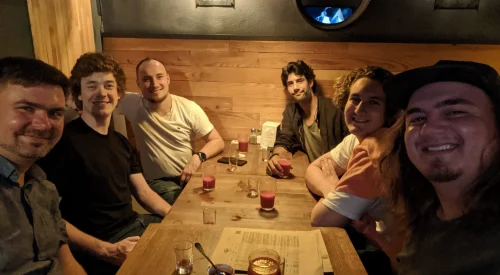
September 2020, Reynad visiting with Ben and others
Ben and Andrey brought physical cards, and we spent hours playtesting the new version in our office meeting room, with Ben timing rounds to simulate real-time mechanics.
Much of 2021 was spent implementing the new vision and refining the visual style across every corner of the game.
N-iX Games took the lead on art direction, helping Tempo Storm shape the game’s distinct visual identity. Our goal was to establish a unified yet diverse aesthetic that would reflect The Bazaar’s genre-blending personality. Imagine Middle Eastern bazaars fused with sci-fi skylines, steampunk tech coexisting with enchanted scrolls, and a plasma rifle casually propped next to a wooden spice rack. That’s The Bazaar.


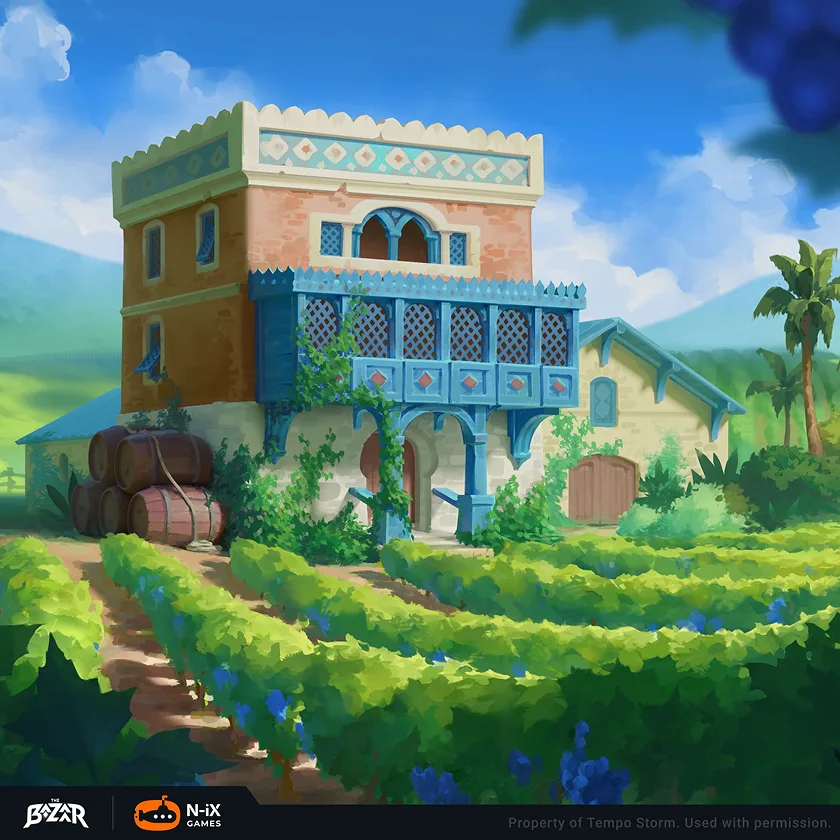
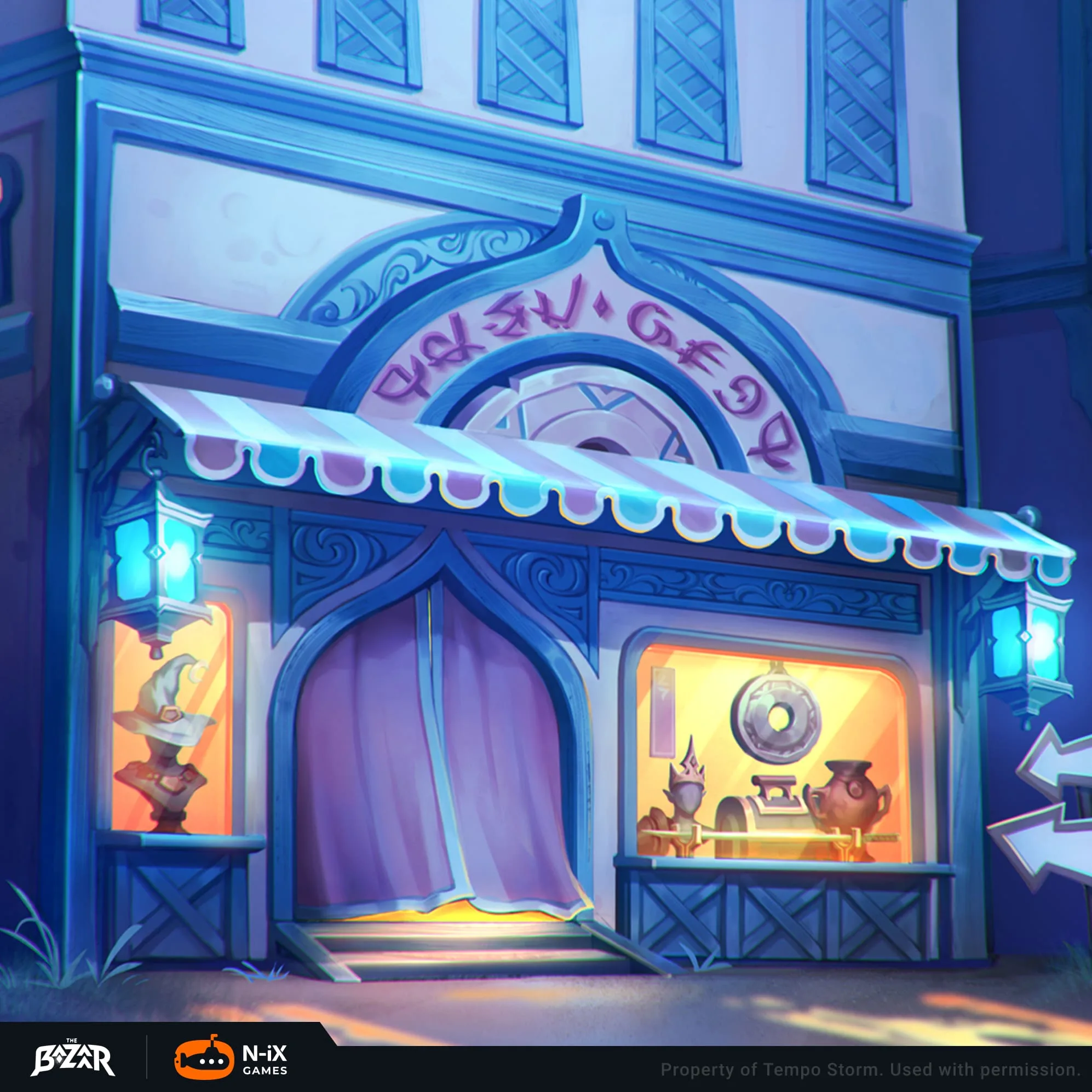
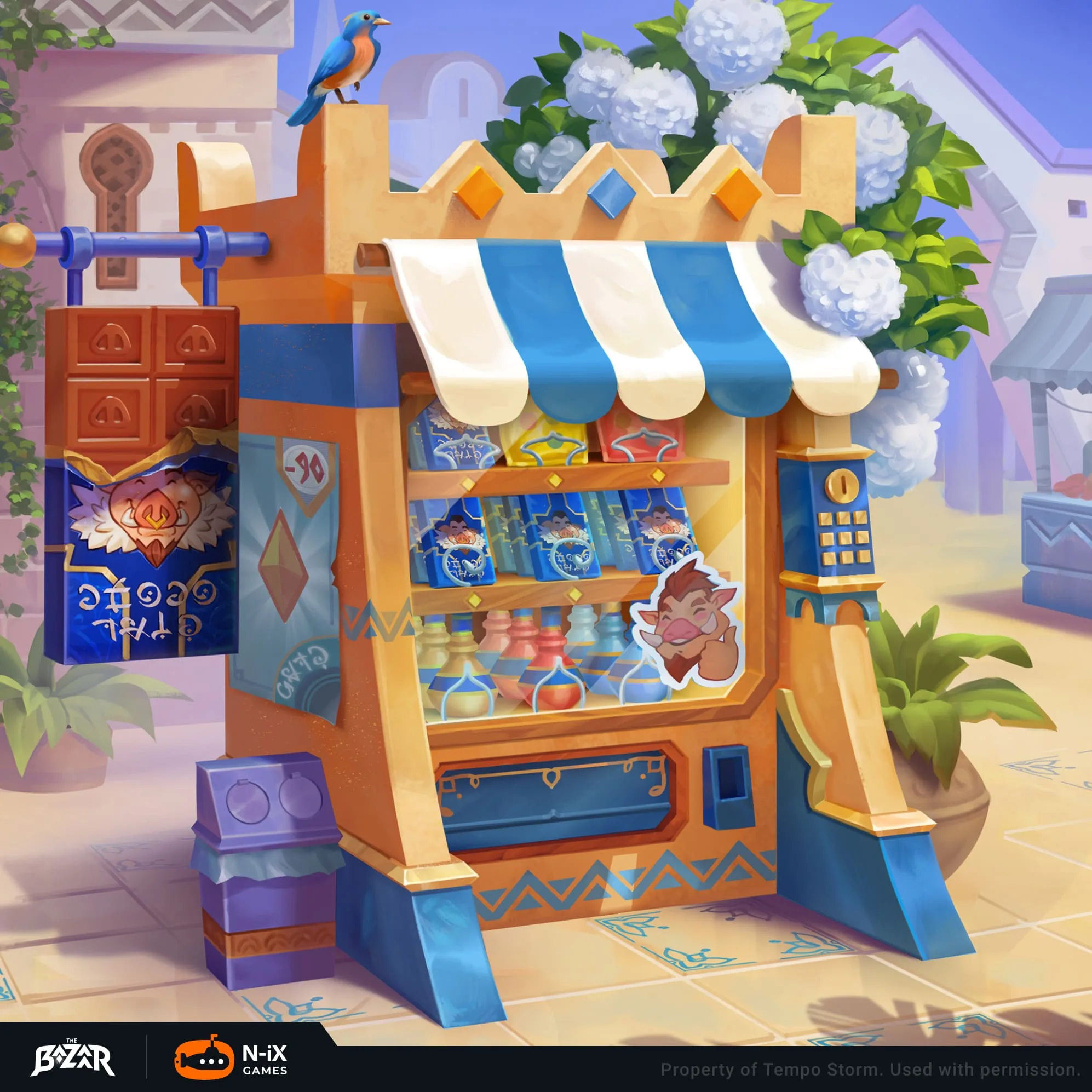
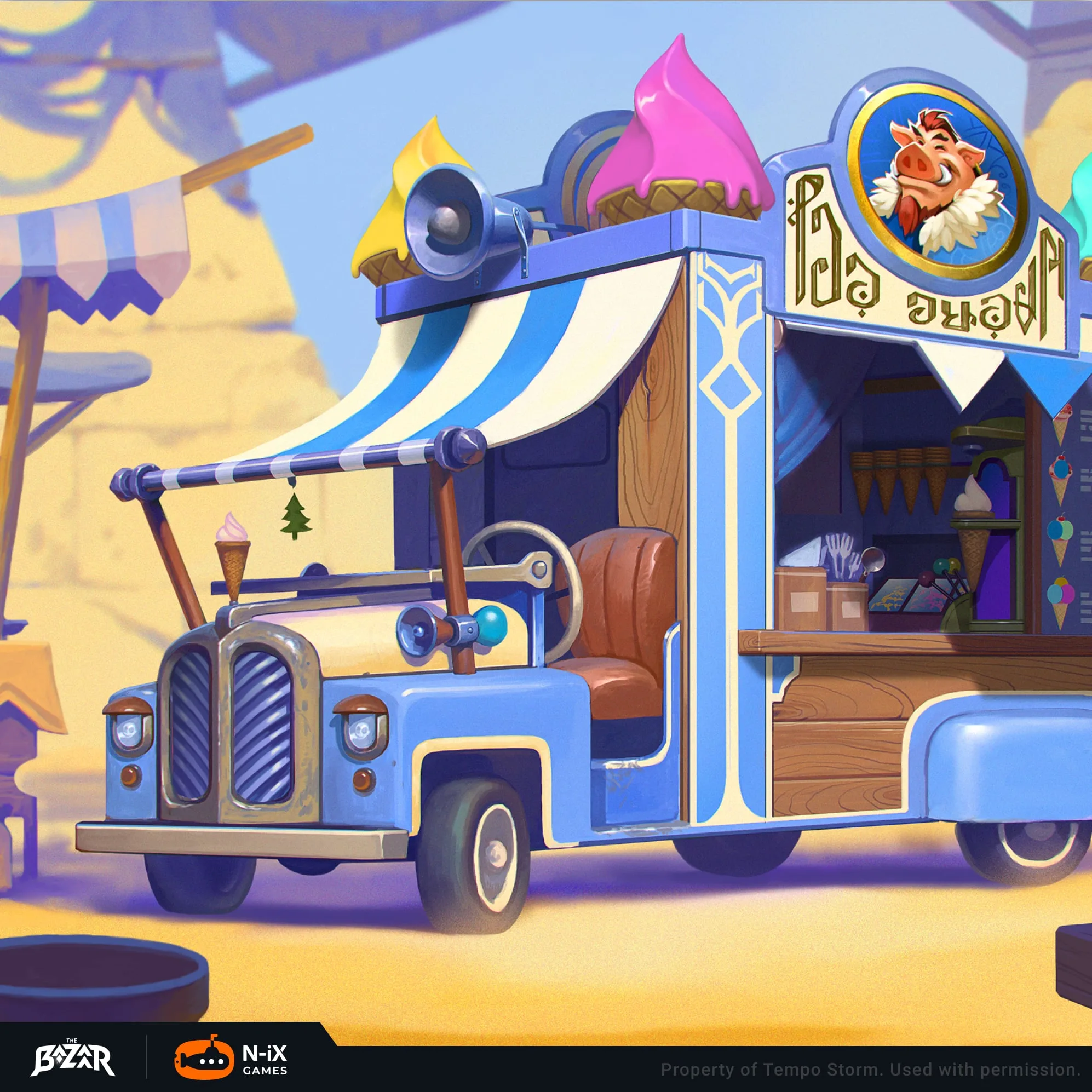
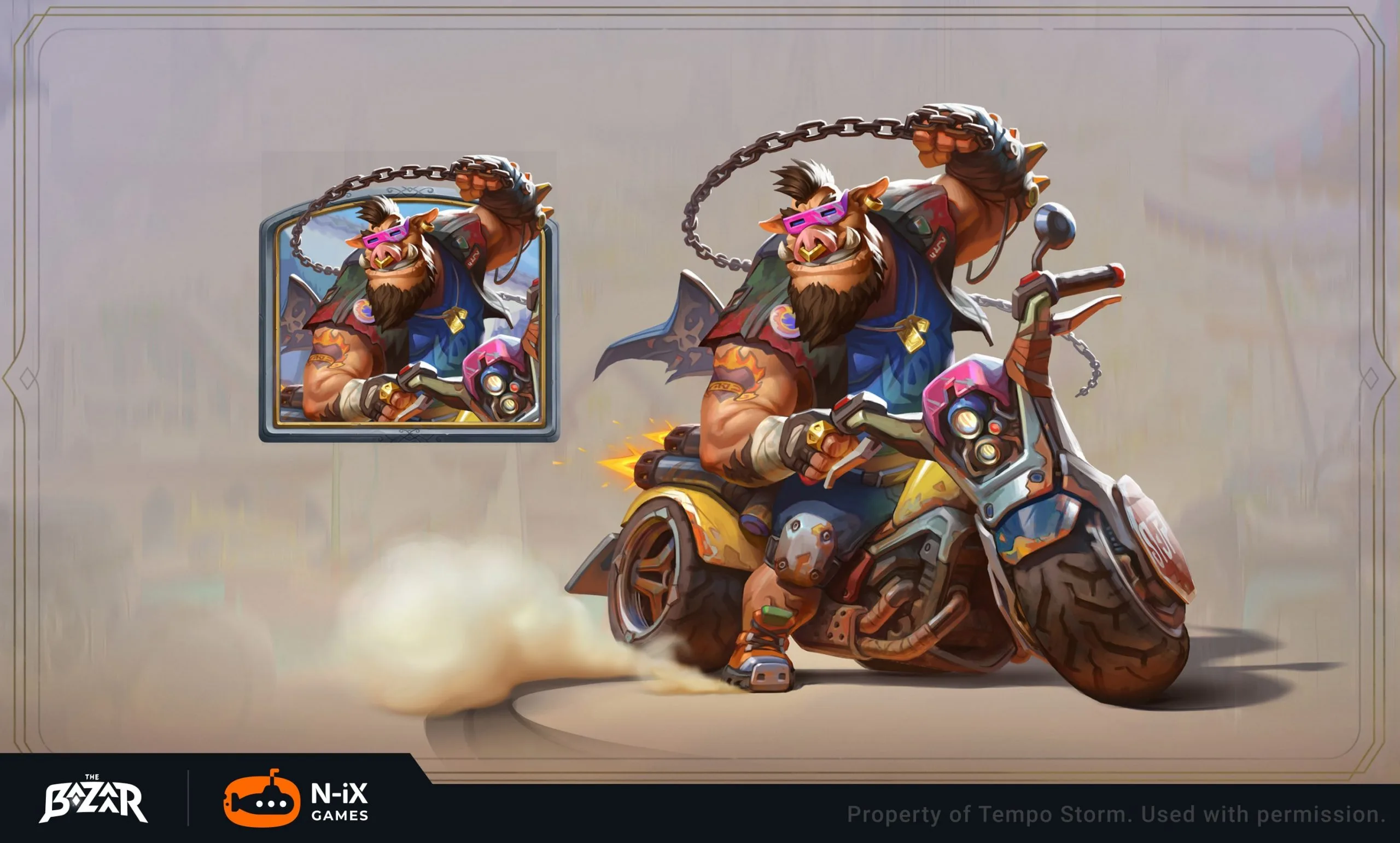
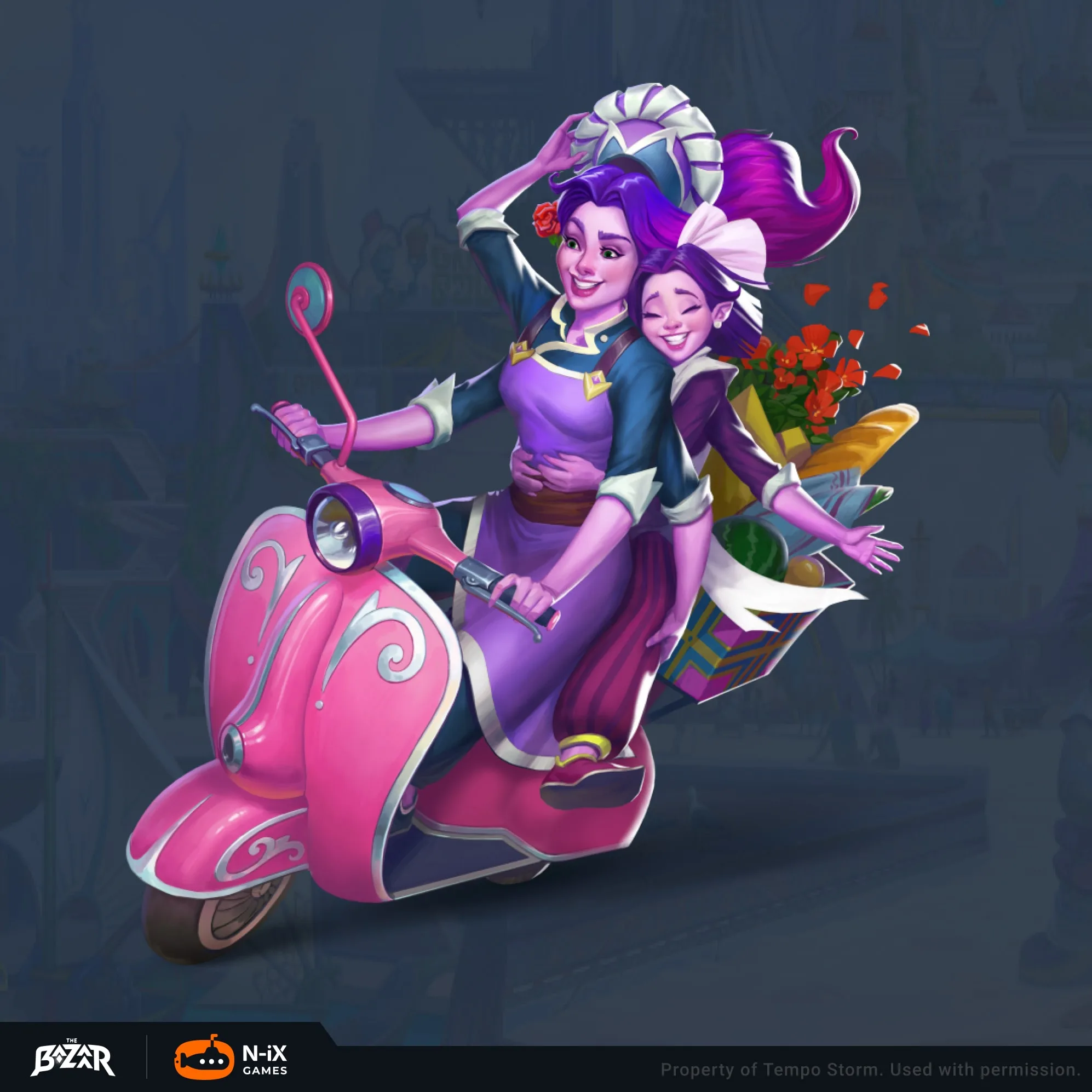
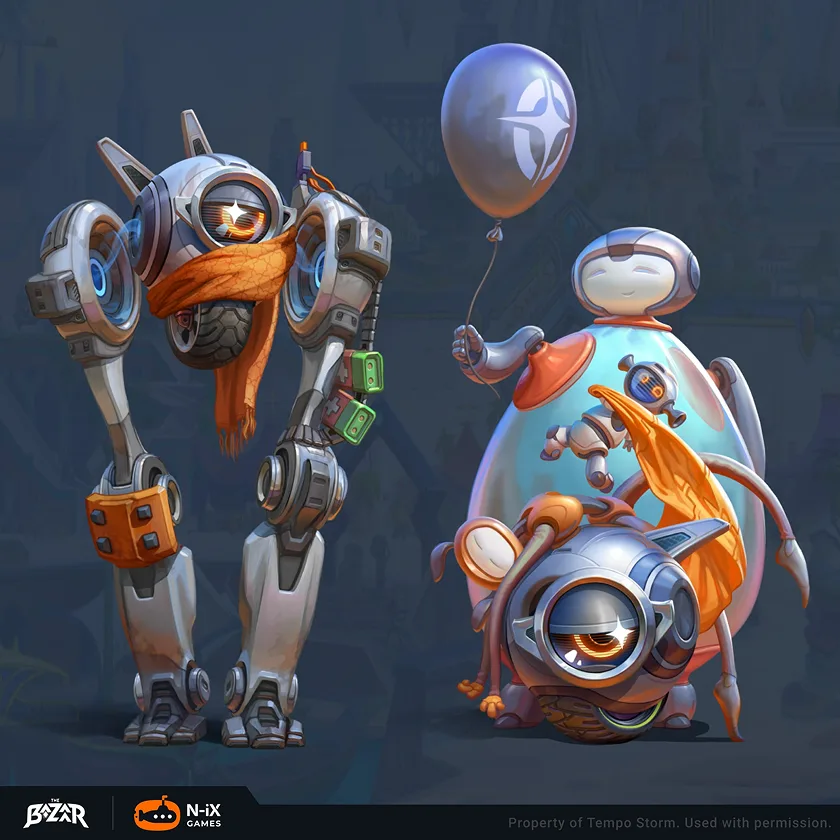
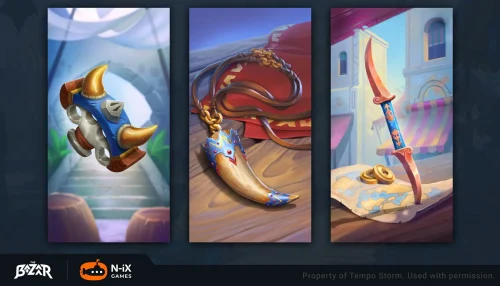
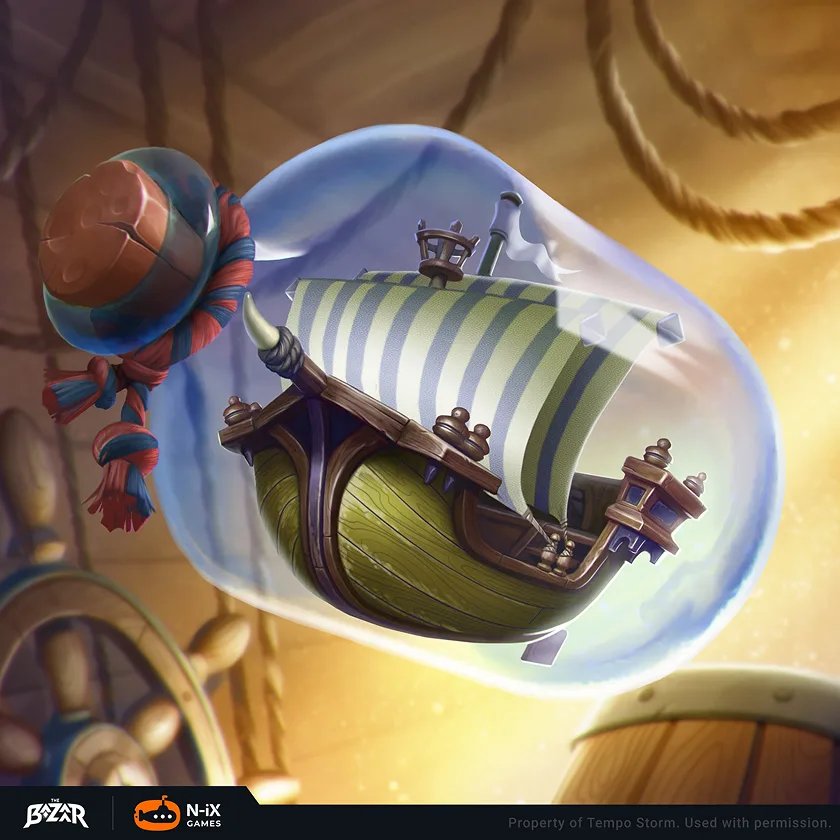
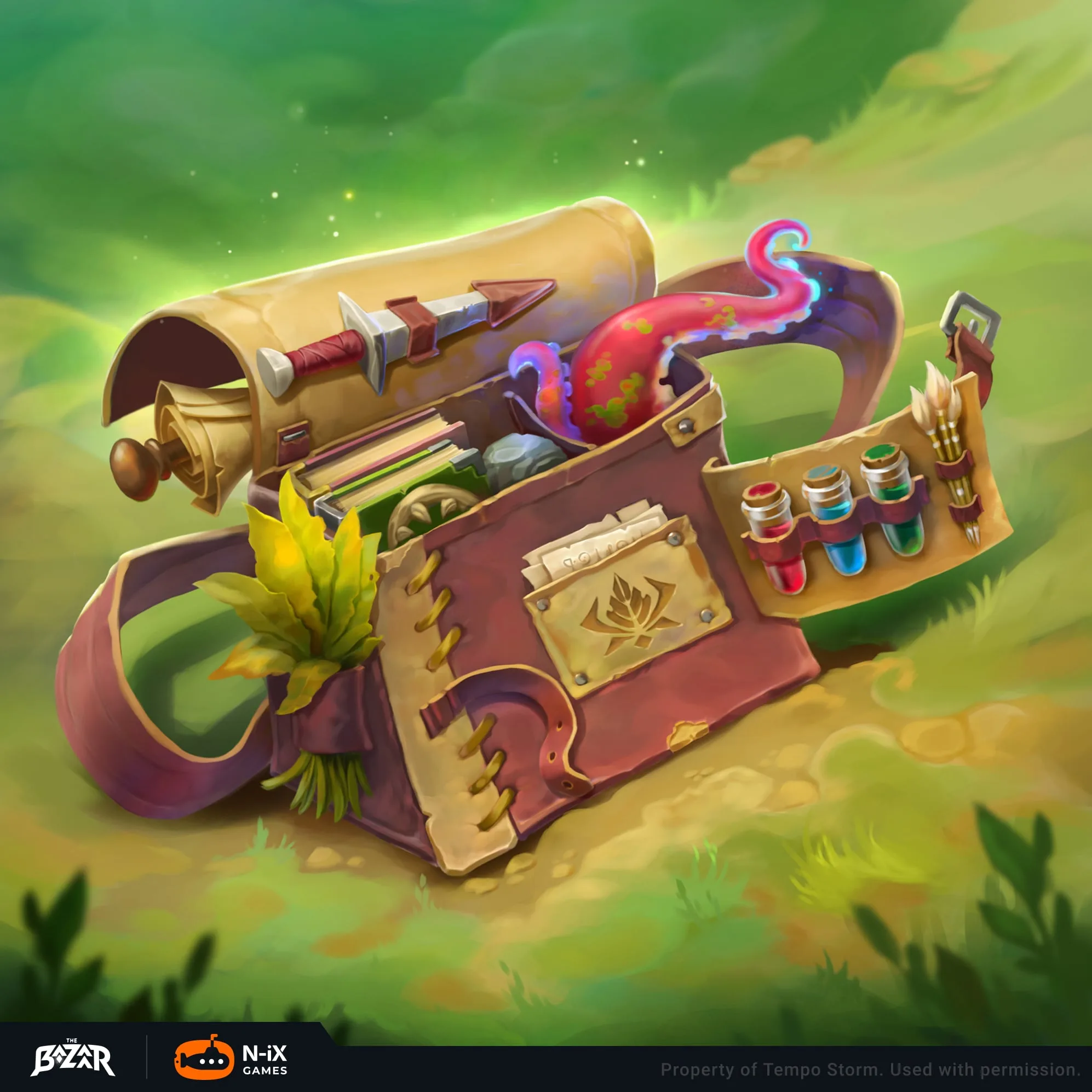
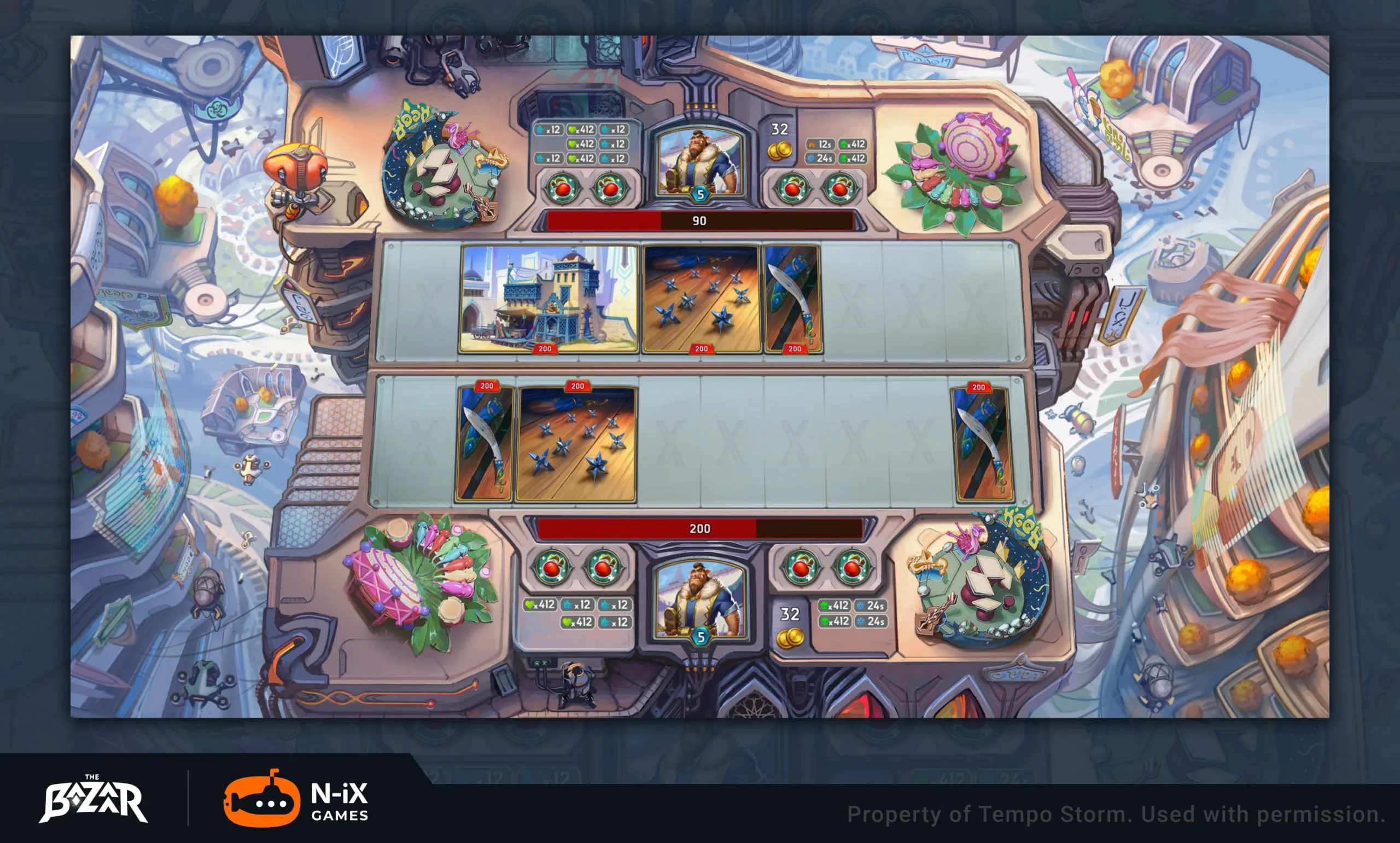

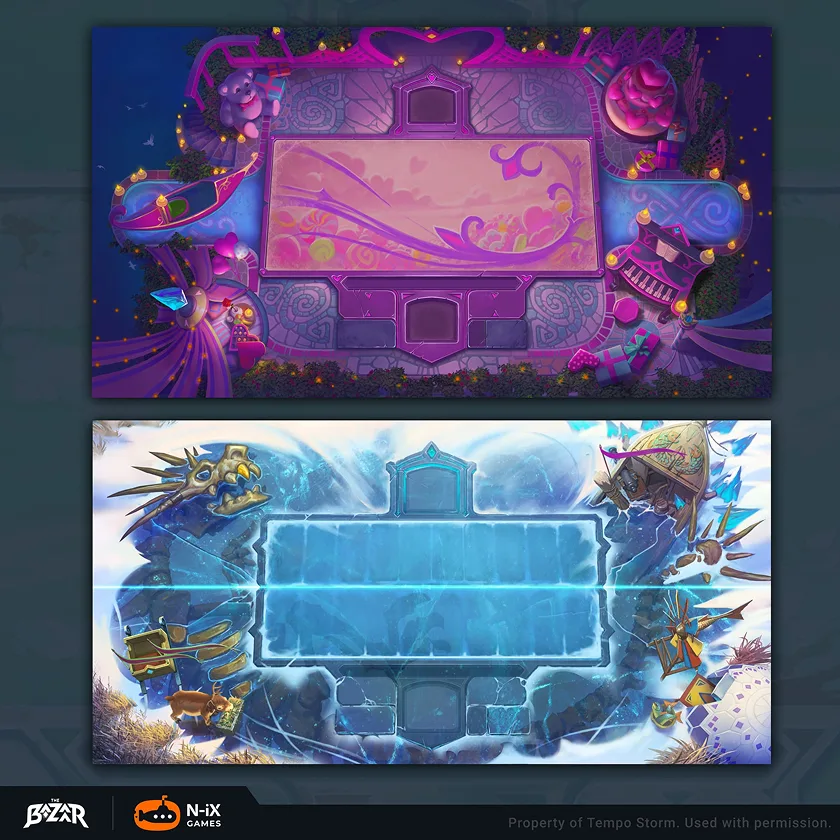
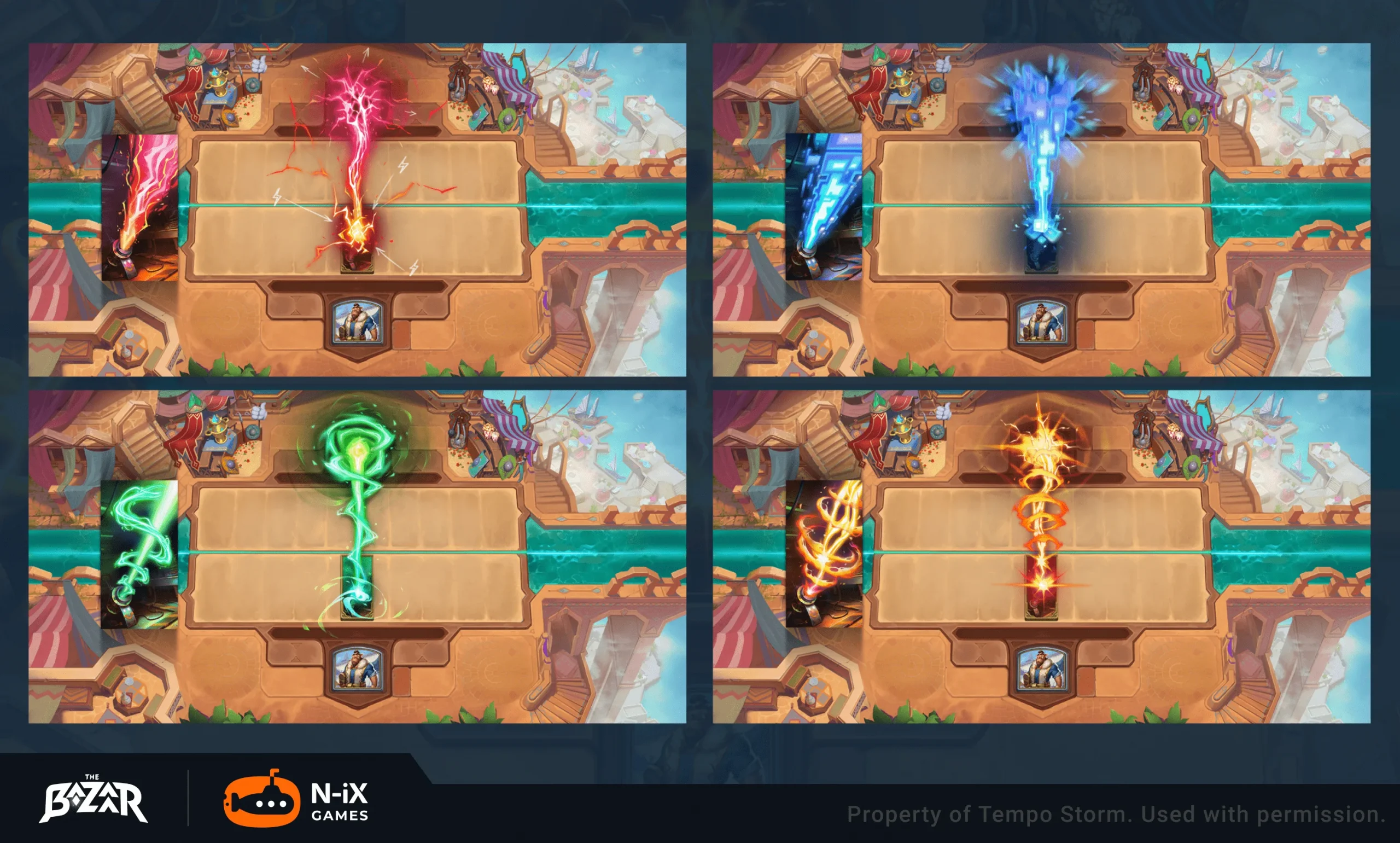
Creating The Bazaar’s art direction was like building a living museum of cultures, and it’s been one of the most creatively fulfilling projects we’ve worked on.
Andrey:
“Honestly, the art team — all the Ukrainians — are just kind of carrying us in the development process. And it’ll still look 5 times better by the time it’s out.”
While art direction took center stage, major work was also happening behind the scenes. We transitioned from a basic server-side system built for turn-based play to a more complex architecture involving two separate backend servers: one for real-time simulation (built with .NET), and another Scala-based server for user account services. Our lead Unity developer had to spend several months digging into the .NET framework to bring that server up.
The last months of the year were a period of crunch, as we needed to deliver a polished version of the game to help secure the next investment round. By the end of 2021, we had completed a brand-new vertical slice — a demo that showcased the new direction in both mechanics and visuals. That demo helped Tempo Storm raise another round of significant funding.
In early 2022, the war in Ukraine erupted, marking a difficult time for everyone on the team. We had to take swift action — relocating team members across the country, ensuring their safety, and providing support for housing, power supply, and stable internet access.
Despite all that, N-iX Games was still committed to the project and successfully supported the development process.
Andrey:
“They were reliable, patient, competent, and delivered excellent work even through a literal war.”
By the end of the year, Tempo Storm gradually transitioned core development in-house, and we worked closely with them to facilitate the smooth transfer of several N-iX Games’ key team members to their internal production team.
At the same time, our studio remained a key partner, continuing to lead art production, support content design, and contribute creatively all the way through to the game’s release.
Throughout 2023, our role naturally began to wind down. Tempo Storm had assembled a large internal production team and was fully equipped to continue development independently.
By summer, the N-iX Games team had scaled down to a few dedicated members, focusing on final handovers and support. From that point on, full development responsibilities were officially on the Tempo Storm side.
Then, in fall 2024, The Bazaar launched in Early Access. After years of development, iteration, and cross-continental teamwork, the game was finally in the hands of its audience.
Critics and fans have praised its strategy, genre-bending design, and replayable roguelike structure. Some are already calling it a “masterpiece in the making,” citing its PvE-inspired PvP system, rich build diversity, and refreshing lack of time pressure.
We’re proud to have been part of The Bazaar’s journey from its earliest prototypes to its public release. Even today, we continue to support the game in small but meaningful ways. The trust that Andrey and the entire Tempo team placed in us was essential to making this collaboration work — and we’re grateful for it.
Reynad:
“Partnering with N-iX has been one of the best decisions we’ve ever made as a company. N-iX has been a phenomenal partner of ours since the beginning of our project. Before Tempo was a Game Studio itself, N-iX would build the early prototypes, demos, and vertical slices that we would design, helping us see our designs through to fruition. The Bazaar is a much better game because of N-iX’s involvement.”
At N-iX Games, we see every project as a chance to contribute to something meaningful. Whether it starts with a simple art prop or evolves into a full-fledged production, we do our best work when we’re collaborating closely and learning alongside our partners. The Bazaar is a great example of what can happen when teams align around a shared vision and stay committed through every twist and turn.
If you’re working on something exciting, we’d love to hear about it!
Let’s start with an in-depth analysis of your idea, a high-level quote, and project plan. Once we smoothen all the rough edges we can proceed to the complete design, development, and production of your game, followed by release and post-release support.